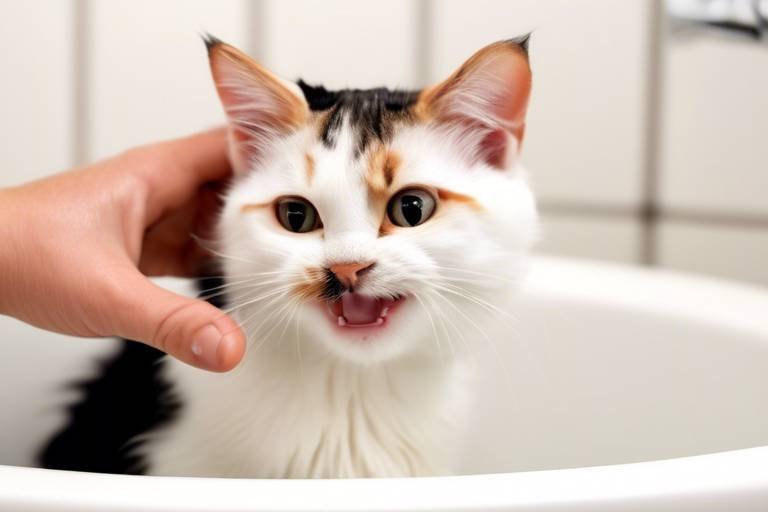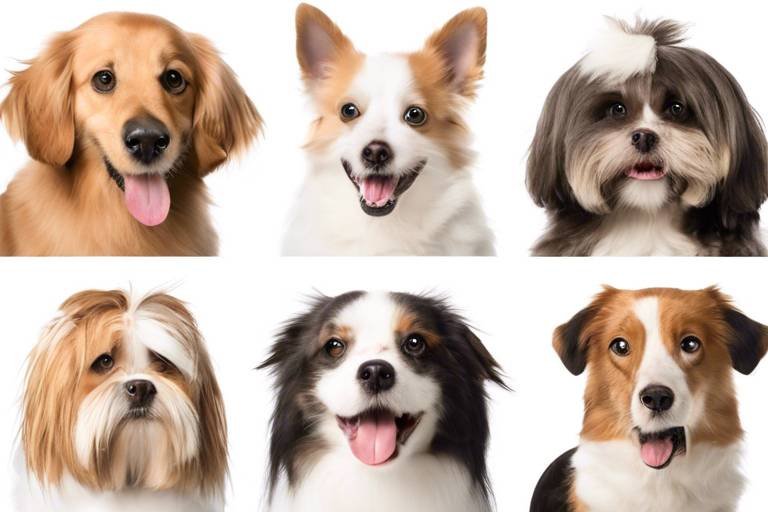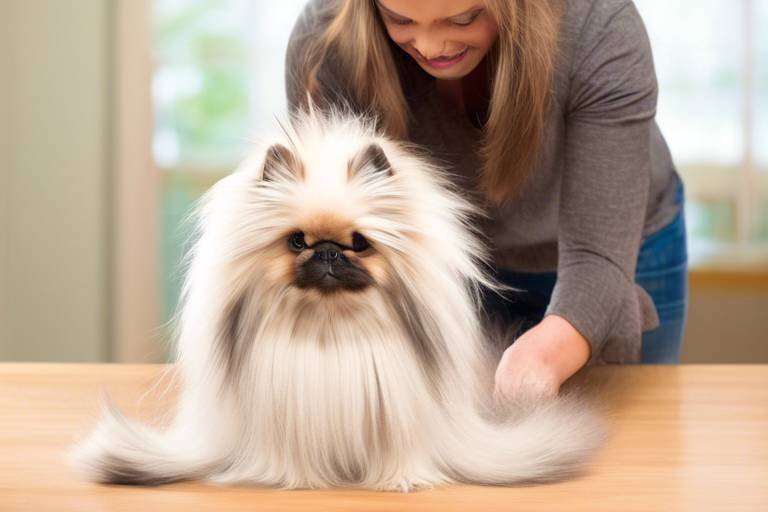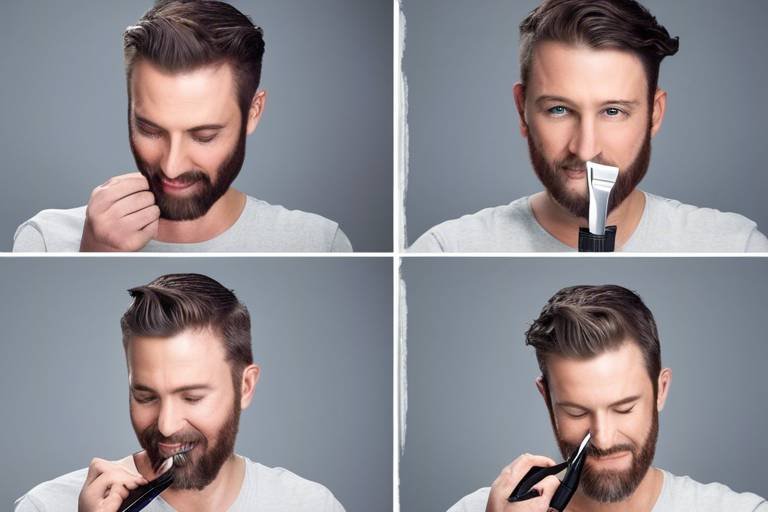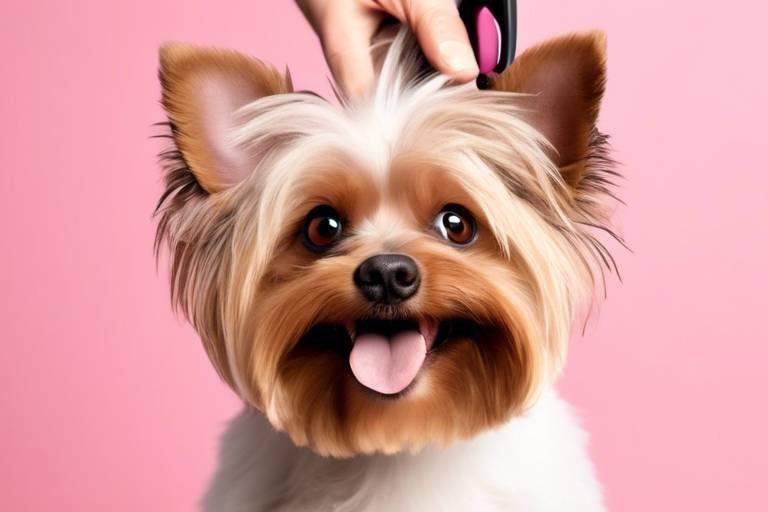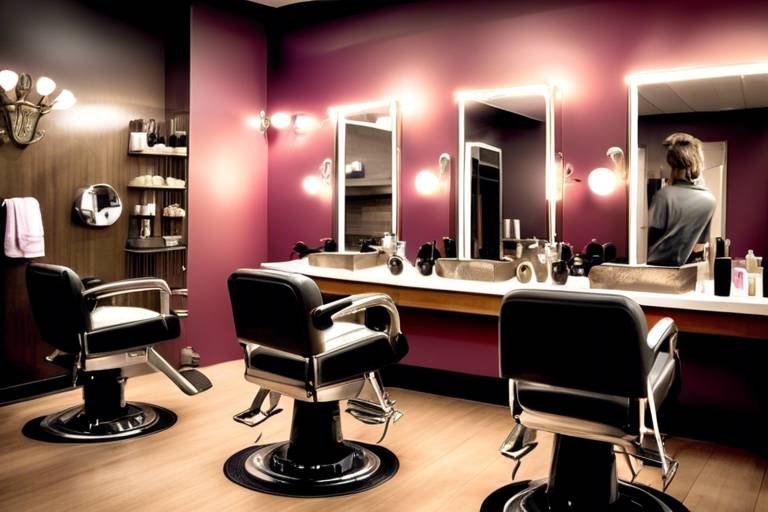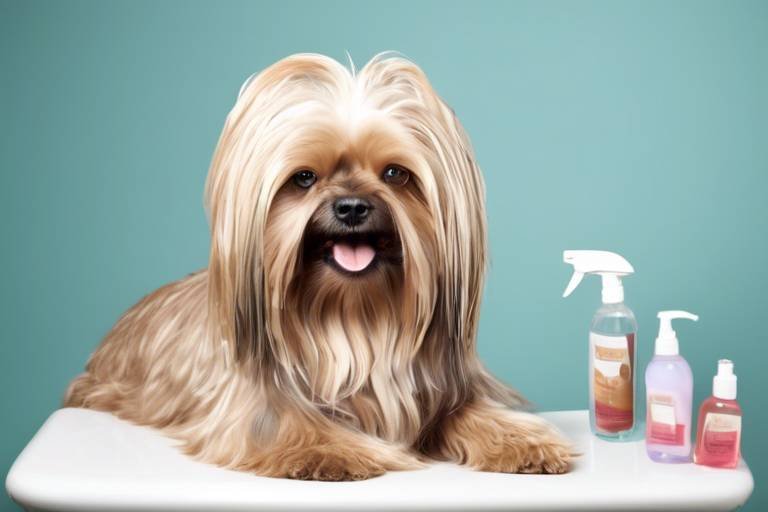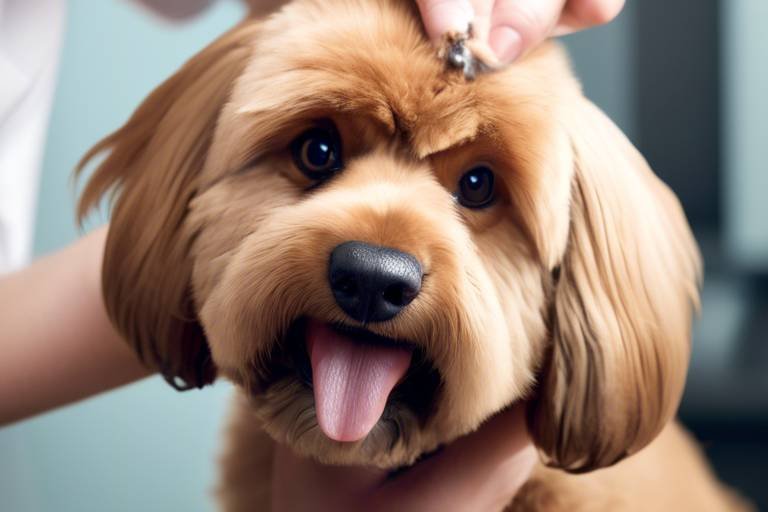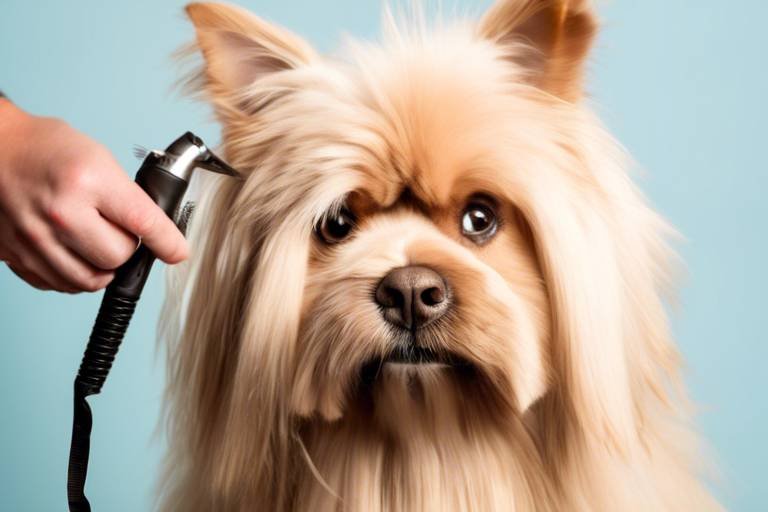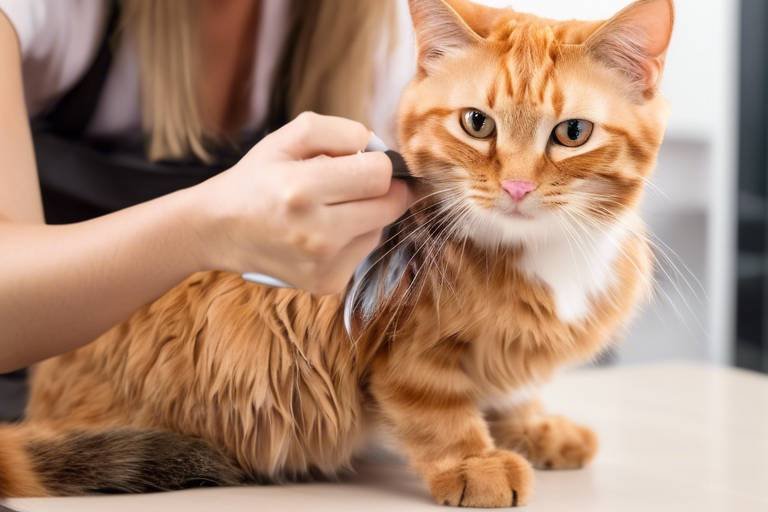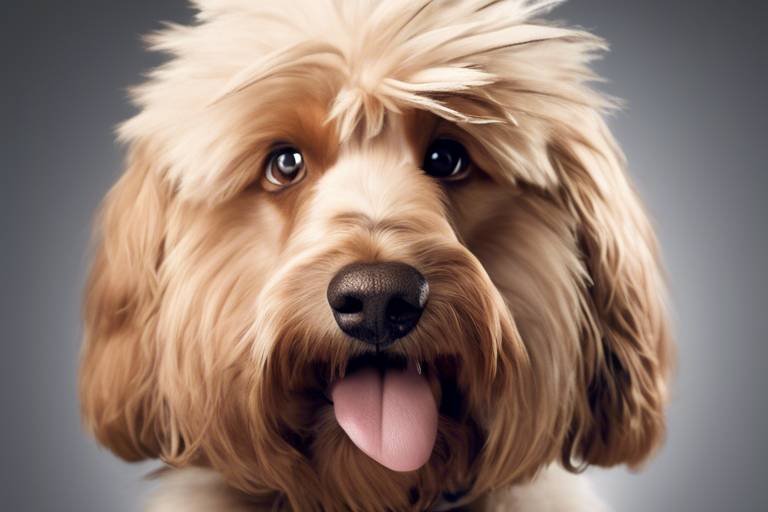Tips for Grooming Dogs with Unique Fur Patterns
Grooming your furry friend is more than just a chore; it’s a bonding experience that can enhance your relationship with your dog. When it comes to dogs with unique fur patterns, the grooming process can be both a challenge and a joy. These distinctive coats often require special attention to keep them looking their best while ensuring their skin remains healthy and free from irritations. So, whether your pup has a curly coat, a wiry texture, or a flowing mane, understanding how to groom them properly is essential. In this article, we’ll dive into the nuances of grooming dogs with unique fur patterns, providing you with the tips and techniques you need to make the process enjoyable for both you and your pet.
Every dog breed has its own unique fur pattern, and understanding these patterns is the first step towards effective grooming. For instance, breeds like Poodles have curly fur that can easily mat if not groomed regularly, while breeds like the Golden Retriever have a double coat that requires different handling. This knowledge is crucial, as it informs the grooming techniques and tools you will need. By recognizing the specific characteristics of your dog's coat, you can tailor your grooming routine to meet their individual needs, ensuring their coat remains healthy, shiny, and free from tangles.
To successfully groom your dog’s unique fur pattern, having the right tools is non-negotiable. Here’s a quick overview of essential grooming tools:
| Tool | Purpose |
|---|---|
| Brush | Removes loose fur and prevents matting |
| Comb | Detangles and smooths fur |
| Clippers | Trims and shapes fur |
| Scissors | For precise trimming around sensitive areas |
| Shampoo | Cleans and maintains coat health |
Each tool serves a specific purpose, and using them correctly can make a world of difference in your grooming routine. Investing in high-quality tools tailored to your dog's fur type can significantly ease the grooming process.
Regular grooming is not just about aesthetics; it’s a vital part of your dog’s health regimen. For dogs with unique fur patterns, neglecting grooming can lead to serious issues such as matting, skin irritations, and excessive shedding. By establishing a consistent grooming routine, you can:
- Prevent matting and tangles that can cause discomfort.
- Reduce the amount of fur shed around your home.
- Keep an eye out for any skin problems or parasites.
Moreover, regular grooming sessions provide an excellent opportunity for you to bond with your pet, reinforcing trust and affection.
The frequency of grooming sessions largely depends on your dog’s fur type. For instance, dogs with long or thick fur may require grooming every few days, while short-haired breeds might only need grooming once a week. Understanding your dog's specific needs will help you maintain their coat and skin health effectively, keeping them comfortable and looking their best.
It’s essential to be observant and recognize when your dog needs grooming. Look for signs such as:
- Excessive shedding around the house.
- Visible mats or tangles in their fur.
- Changes in coat texture or dullness.
If you notice any of these indicators, it’s time to schedule a grooming session. Keeping an eye on your dog’s coat will help you stay ahead of any grooming challenges.
Each unique fur pattern requires specific grooming techniques. For example, a dog with a curly coat may benefit from a slicker brush to remove tangles, whereas a dog with a double coat may need a combination of a rake and a de-shedding tool to manage undercoat shedding. Learning these techniques ensures that your dog’s coat is well-maintained and looking its best, regardless of its complexity.
Bathing is a crucial part of grooming dogs with unique fur patterns. Choosing the right shampoo and conditioner can enhance the coat's appearance and health while preventing skin irritations. Always opt for products that are designed for your dog's specific coat type to maximize the benefits.
When selecting grooming products, consider your dog's specific needs, including skin sensitivity and coat type. Look for:
- Shampoos that are free from harsh chemicals.
- Conditioners that provide moisture and detangling benefits.
- Products that are specifically formulated for your dog’s breed.
Using the right products will not only improve the health of your dog’s coat but can also make grooming easier and more enjoyable.
After bathing, proper grooming techniques can help maintain your dog's fur pattern. Make sure to dry your dog thoroughly, as damp fur can lead to matting. Brush their coat gently to remove any tangles and apply finishing products, such as leave-in conditioners or detanglers, to keep the coat smooth and manageable. These steps can significantly enhance the overall look of your dog’s coat, leaving them feeling fresh and fabulous.
Sometimes, seeking professional grooming services is the best option for dogs with intricate fur patterns. Professionals have the expertise and tools to handle complex grooming needs effectively. They can also provide valuable advice on maintaining your dog’s coat between grooming sessions.
Knowing when to seek professional help can save you time and ensure your dog’s coat remains in top condition. Consider factors such as:
- Coat type and complexity.
- Severity of matting or tangling.
- Your own grooming skills and comfort level.
If you feel overwhelmed or unsure, it’s perfectly okay to call in the experts!
Finding a qualified groomer who understands unique fur patterns is essential. Look for recommendations from friends or family, read online reviews, and ensure they have experience with your dog’s specific breed and grooming needs. A good groomer will not only make your dog look great but will also ensure they feel comfortable and safe during the grooming process.
1. How often should I groom my dog with a unique fur pattern?
The frequency depends on the dog’s fur type. Long-haired breeds may need grooming every few days, while short-haired breeds may only require it once a week.
2. What tools do I need for grooming my dog?
Essential tools include a brush, comb, clippers, scissors, and dog shampoo. Each tool serves a specific purpose in maintaining your dog's coat.
3. Can I groom my dog at home?
Yes, many dogs can be groomed at home, but it’s important to understand their specific grooming needs. If you’re unsure, consider consulting a professional groomer.
4. What signs indicate my dog needs grooming?
Look for excessive shedding, matting, or changes in coat texture. These signs often indicate it’s time for a grooming session.
5. When should I consider professional grooming services?
If your dog has severe matting, a complex coat, or if you’re uncomfortable grooming them yourself, it’s a good idea to seek professional help.
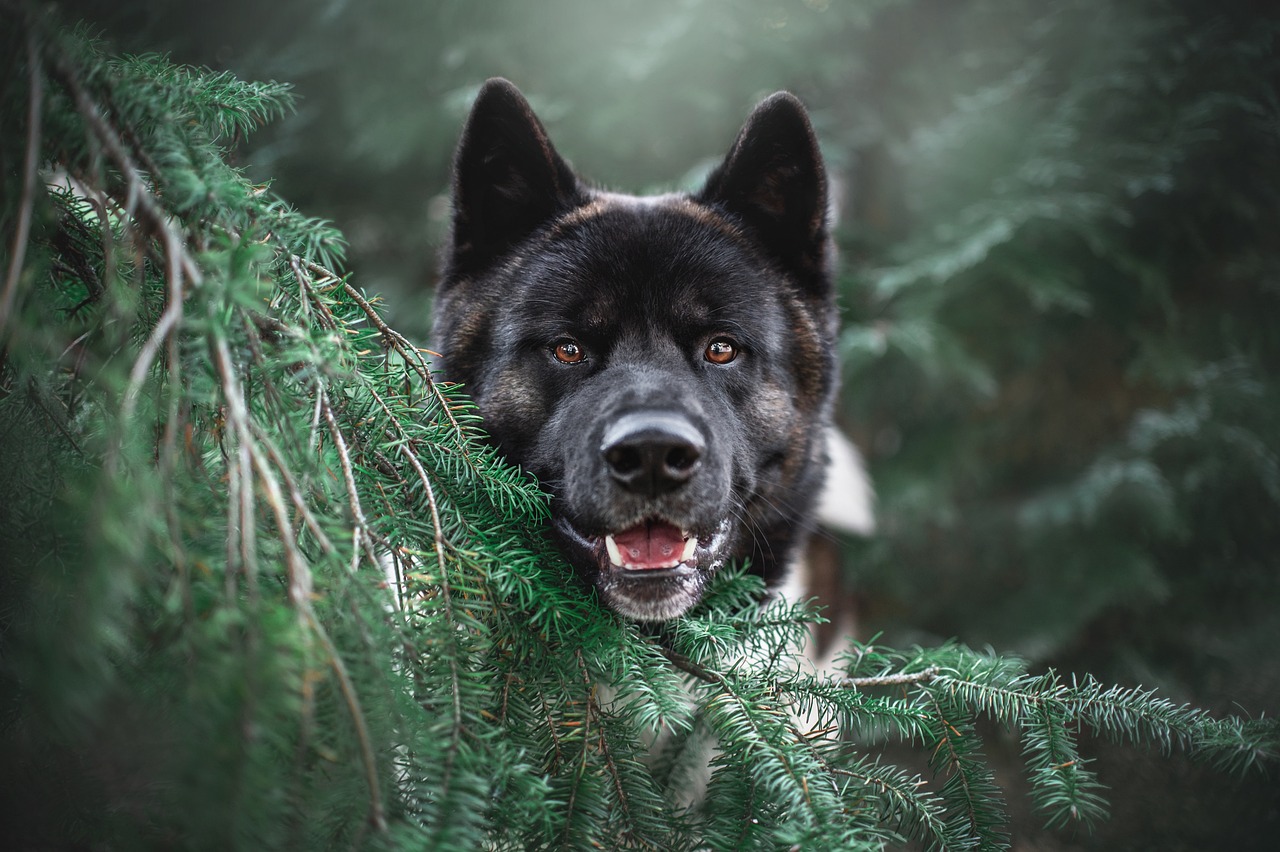
Understanding Unique Fur Patterns
Dogs come in all shapes, sizes, and fur patterns, each with its own unique flair. Understanding these distinctive fur patterns is not just about aesthetics; it plays a crucial role in how you groom your furry friend. For instance, breeds like the Poodle have a curly coat that requires different grooming techniques compared to the sleek fur of a Beagle. Each type of fur has its own characteristics, and recognizing these can make a world of difference in maintaining your dog's coat.
When we talk about unique fur patterns, we often refer to a few key characteristics that can affect grooming:
- Texture: The texture of a dog's fur can range from silky to wiry, influencing the type of grooming tools and products you'll need.
- Length: Long-haired breeds like the Yorkshire Terrier require more frequent grooming to prevent tangles, while short-haired breeds may need less attention.
- Density: Dogs with dense coats, such as Golden Retrievers, often shed more and require tools that can effectively manage undercoat removal.
To illustrate this, let's take a look at a simple comparison of several popular breeds and their fur patterns:
| Breed | Fur Type | Grooming Needs |
|---|---|---|
| Poodle | Curly | Frequent brushing, regular trims |
| Beagle | Sleek | Occasional brushing, minimal maintenance |
| Golden Retriever | Dense | Regular brushing, seasonal grooming |
| Yorkshire Terrier | Long | Daily brushing, regular trims |
Understanding these aspects of your dog's fur pattern is essential not just for grooming, but also for their overall health. A well-groomed coat can help prevent skin issues, matting, and excessive shedding. Plus, it enhances your bond with your pet, as grooming can be a relaxing and enjoyable experience for both of you. So, the next time you look at your dog, take a moment to appreciate the unique patterns that make them who they are!
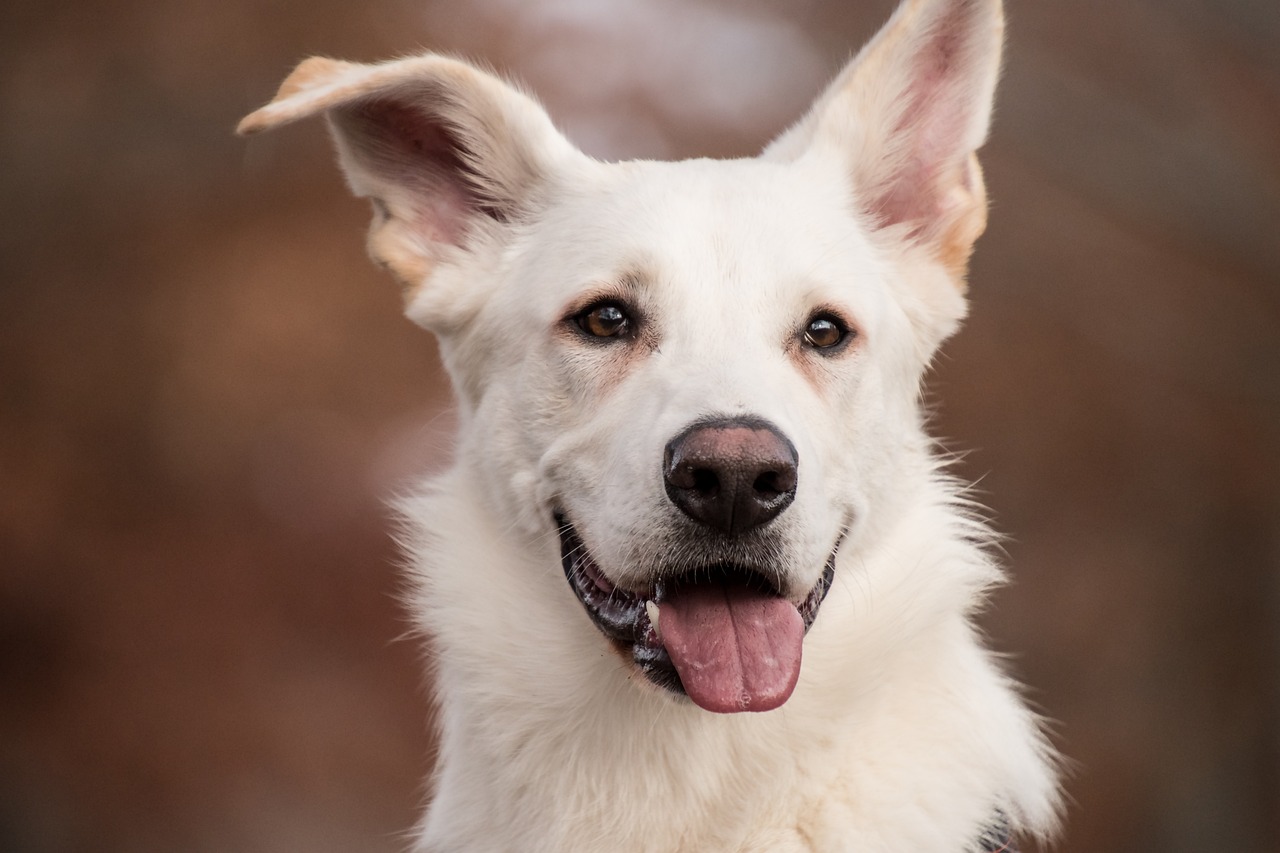
Essential Grooming Tools
When it comes to grooming dogs with unique fur patterns, having the right tools is absolutely essential. Think of grooming tools as the magic wands that help you transform your dog’s coat from a tangled mess into a stunning masterpiece. Just like a painter needs the right brushes to create a beautiful painting, you need specific grooming tools to maintain your dog's unique fur. Each tool serves a distinct purpose, and understanding their functions will make your grooming sessions more effective and enjoyable.
Let’s start with the basics. A good quality brush is your best friend when it comes to grooming. Depending on your dog’s fur type, you might need different kinds of brushes. For instance, a slicker brush is excellent for removing tangles and mats in long-haired breeds, while a bristle brush works wonders for short-haired dogs. But don’t stop there! A comb is also crucial for those hard-to-reach spots, helping to detangle and smooth out the coat.
Next up, we have clippers and scissors. If your dog has a unique fur pattern that requires trimming, investing in a quality clipper can save you time and hassle. Scissors are perfect for finishing touches, especially around sensitive areas like the face and paws. Just imagine the joy of seeing your dog strut around with a perfectly groomed coat, thanks to the right tools!
Don't forget about shampoos and conditioners. Choosing the right products is crucial for maintaining your dog's coat health. Opt for shampoos that are specifically formulated for your dog's fur type, whether it's curly, wiry, or silky. Conditioners can help keep the coat moisturized and manageable. It’s like giving your dog a spa day every time you groom!
Lastly, a grooming table can be a game changer. It provides a stable surface where you can easily groom your dog without straining your back. Plus, it helps keep your furry friend secure during the grooming process. If you’re serious about grooming, this is one tool you might want to consider.
Here’s a quick summary of essential grooming tools:
| Tool | Purpose |
|---|---|
| Brush | Removes tangles and mats |
| Comb | Detangles and smooths coat |
| Clippers | Trims fur for a neat appearance |
| Scissors | Finishing touches around sensitive areas |
| Shampoo | Cleans and maintains coat health |
| Conditioner | Keeps coat moisturized and manageable |
| Grooming Table | Provides stability and comfort during grooming |
In conclusion, investing in the right grooming tools not only makes the grooming process easier but also enhances the bond between you and your furry friend. With the right equipment, you can ensure that your dog’s unique fur pattern is always looking its best, allowing you both to enjoy the grooming experience together.
The Importance of Regular Grooming
Grooming your dog regularly is not just a matter of aesthetics; it's a crucial part of maintaining their overall health and well-being. Just think about it: would you leave your hair uncombed for weeks on end? Probably not! The same principle applies to our furry friends. Regular grooming sessions help ensure that your dog's coat remains clean, healthy, and free of tangles or mats, which can lead to discomfort and skin issues.
One of the primary benefits of regular grooming is the prevention of matting. Dogs with unique fur patterns, such as long-haired breeds or those with curly coats, are particularly prone to matting. When fur becomes tangled, it can pull on the skin, causing pain and irritation. By grooming your dog consistently, you can keep their coat smooth and tangle-free. Plus, a well-groomed coat allows for better air circulation, which is essential for skin health.
Additionally, regular grooming significantly reduces shedding. Imagine a world where your home isn't constantly covered in dog hair! Grooming helps remove loose hair before it ends up on your furniture or clothes. This not only keeps your living space cleaner but also minimizes the risk of allergies for you and your family.
Another critical aspect of regular grooming is the opportunity it provides to inspect your dog's skin and coat for any abnormalities. During grooming sessions, you can check for signs of irritation, parasites, or unusual lumps. Early detection of any issues can lead to quicker treatment and better outcomes. Just like how we go for regular check-ups, our pets need similar attention to ensure they remain healthy and happy.
To summarize, the importance of regular grooming cannot be overstated. Here are a few key points to remember:
- Prevents matting: Keeps your dog's coat tangle-free and comfortable.
- Reduces shedding: Helps maintain a cleaner home environment.
- Promotes skin health: Allows for better air circulation and skin inspection.
- Strengthens the bond: Regular grooming sessions can enhance the relationship between you and your dog, making it a bonding experience.
Frequency of Grooming Sessions
When it comes to grooming your dog, the can vary significantly based on the unique fur type and pattern of your furry friend. Just like a well-tuned instrument, each dog has its own rhythm when it comes to grooming. For instance, long-haired breeds like the Yorkshire Terrier or Shih Tzu may require grooming every 4 to 6 weeks to prevent matting and tangling. On the other hand, short-haired breeds such as the Beagle or Boxer might only need a good brush every few months to keep their coats healthy and shiny.
Understanding your dog's specific grooming needs is crucial. Factors such as the dog's activity level, the environment they live in, and their overall health can influence how often you should groom them. For example, dogs that spend a lot of time outdoors may need more frequent grooming to remove dirt and debris from their coats. Additionally, some breeds shed more than others, which can also dictate the grooming schedule. Here’s a quick breakdown of how often to groom based on fur types:
| Fur Type | Recommended Grooming Frequency |
|---|---|
| Short Hair | Every 2-3 months |
| Medium Hair | Every 4-6 weeks |
| Long Hair | Every 3-4 weeks |
| Curly Hair | Every 4-6 weeks |
It's also essential to consider the seasonal changes that can affect your dog's grooming needs. During shedding season, which typically occurs in spring and fall, you might find yourself needing to groom your dog more frequently to manage the excess fur. Regular brushing during these times can help keep shedding under control and maintain a healthy coat.
Lastly, always pay attention to your dog's behavior and coat condition. If you notice your dog scratching more than usual, or if their coat appears dull and lifeless, it might be time to schedule a grooming session sooner rather than later. Grooming isn’t just about aesthetics; it’s an opportunity to check for any skin issues, parasites, or other health concerns. So, keep that grooming schedule flexible and adjust it according to your dog's needs!
- How often should I groom my dog? It depends on the breed and fur type. Generally, short-haired dogs need less frequent grooming than long-haired ones.
- What tools do I need for grooming? Essential tools include brushes, combs, clippers, and shampoos specifically designed for your dog's coat type.
- Can I groom my dog at home? Yes, many dog owners successfully groom their pets at home with the right tools and techniques.
- When should I seek professional grooming? If your dog has a complex fur pattern or severe matting, consider professional help for the best results.
Signs Your Dog Needs Grooming
Every dog owner knows that grooming is not just a luxury; it’s a necessity! But how do you know when your furry friend is due for a grooming session? Sometimes, it’s not as obvious as you might think. Dogs with unique fur patterns can be particularly tricky, and missing the signs can lead to discomfort for your pet. So, let's dive into the tell-tale signs that your dog is practically waving a flag saying, “I need a groom!”
First and foremost, excessive shedding is a clear indicator that it’s time for a grooming session. If you find yourself constantly sweeping up fur or discovering tufts of hair on your clothes, your dog might be telling you that it's time to brush out those loose strands. Not only does regular grooming help manage shedding, but it also allows you to check for any underlying skin issues that could be causing the excessive loss of fur.
Another sign to look out for is matting. If your dog's fur is starting to clump together or form tangles, this is a serious red flag. Matting can lead to skin irritations and infections if not addressed promptly. For dogs with long or curly fur, matting can happen quickly, so it's essential to keep an eye on their coat. If you notice mats, especially around sensitive areas like the ears or underbelly, it’s time to grab that brush!
Changes in your dog’s coat texture can also signal a need for grooming. If you feel that their fur has become oily, sticky, or just doesn’t feel right, it might be time for a bath and a good grooming session. A healthy coat should feel clean and smooth, so any drastic changes could indicate that dirt or debris has built up in their fur.
Lastly, don’t overlook the importance of regular inspections. While grooming, take a moment to look for any signs of skin issues such as redness, bumps, or unusual odors. These could be signs of allergies or infections that need veterinary attention. Regular grooming not only keeps your dog looking fabulous but also helps you stay on top of their overall health.
In summary, the signs that your dog needs grooming include:
- Excessive shedding
- Visible mats and tangles
- Changes in coat texture
- Skin irritations or unusual odors
By paying attention to these signs, you can ensure that your furry friend remains comfortable, happy, and looking their best. Remember, grooming is not just about aesthetics; it’s a crucial part of your dog’s health and well-being!
Q: How often should I groom my dog?
A: The frequency of grooming depends on your dog's fur type. Long-haired breeds may require grooming several times a week, while short-haired breeds might only need it every few weeks.
Q: Can I groom my dog at home?
A: Yes, many dog owners groom their pets at home. However, it's essential to have the right tools and knowledge about your dog’s specific grooming needs.
Q: What if my dog hates being groomed?
A: If your dog is resistant to grooming, try to make it a positive experience with treats and praise. Gradually introduce grooming tools to help them get used to the process.
Q: When should I seek professional grooming services?
A: If your dog has severe matting, a complex fur pattern, or if you’re unsure about how to groom them properly, it’s best to seek professional help.
Grooming Techniques for Different Patterns
When it comes to grooming dogs with unique fur patterns, understanding the specific needs of each pattern is crucial for achieving a healthy and beautiful coat. Every dog is like a canvas, and their fur patterns are the artwork that requires careful attention and skillful technique. For instance, long-haired breeds such as the Yorkshire Terrier or Shih Tzu need a different approach compared to short-haired breeds like the Beagle or Boxer.
For long-haired dogs, the key is to start with a wide-toothed comb to gently detangle any knots. Once the fur is free of tangles, switch to a slicker brush to smooth out the coat and remove any loose hair. It’s essential to be patient during this process—think of it as untangling a delicate necklace. If you encounter a particularly stubborn mat, you might consider using a dematting tool, which can help break up the tangles without pulling on your dog's skin.
On the other hand, short-haired breeds require a different grooming technique. A rubber grooming mitt or a bristle brush can work wonders in removing loose fur while also stimulating the skin. This process is akin to giving your dog a gentle massage, which they will surely appreciate! For dogs with wiry coats, such as the Scottish Terrier, a stripping knife may be necessary to maintain the coat’s texture and appearance.
Additionally, dogs with curly or wavy fur, like the Poodle or Portuguese Water Dog, call for regular grooming to prevent matting. For these breeds, using a slicker brush followed by a comb can help maintain their unique texture. It’s important to brush in sections, starting from the roots and working your way to the tips, similar to how you would style your own hair. This ensures that you’re not just fluffing the top layer but addressing the underlying fur as well.
To summarize, here are some grooming techniques tailored for different fur patterns:
- Long-haired breeds: Wide-toothed comb, slicker brush, and dematting tool.
- Short-haired breeds: Rubber grooming mitt or bristle brush.
- Wiry coats: Stripping knife for texture maintenance.
- Curly/wavy coats: Slicker brush followed by a comb, brushing in sections.
Ultimately, the goal of grooming is not only to keep your dog's coat looking fabulous but also to strengthen the bond you share. Think of grooming as a quality time spent together—your dog will appreciate the extra love and attention, and you’ll enjoy the satisfaction of seeing them look their best!
Q1: How often should I groom my dog based on their fur pattern?
A1: The frequency of grooming varies by breed and fur type. Long-haired breeds may require grooming every 4-6 weeks, while short-haired breeds might only need it every couple of months.
Q2: What should I do if my dog has severe matting?
A2: If your dog has severe matting, it’s best to consult a professional groomer. They can safely remove the mats without causing harm to your dog’s skin.
Q3: Can I use human shampoo on my dog?
A3: No, human shampoo can irritate a dog's skin. Always use products specifically formulated for dogs to ensure their skin and coat remain healthy.
Q4: What are the signs that my dog needs grooming?
A4: Look for excessive shedding, noticeable mats, a dull coat, or changes in texture. These are all indicators that it’s time for a grooming session.
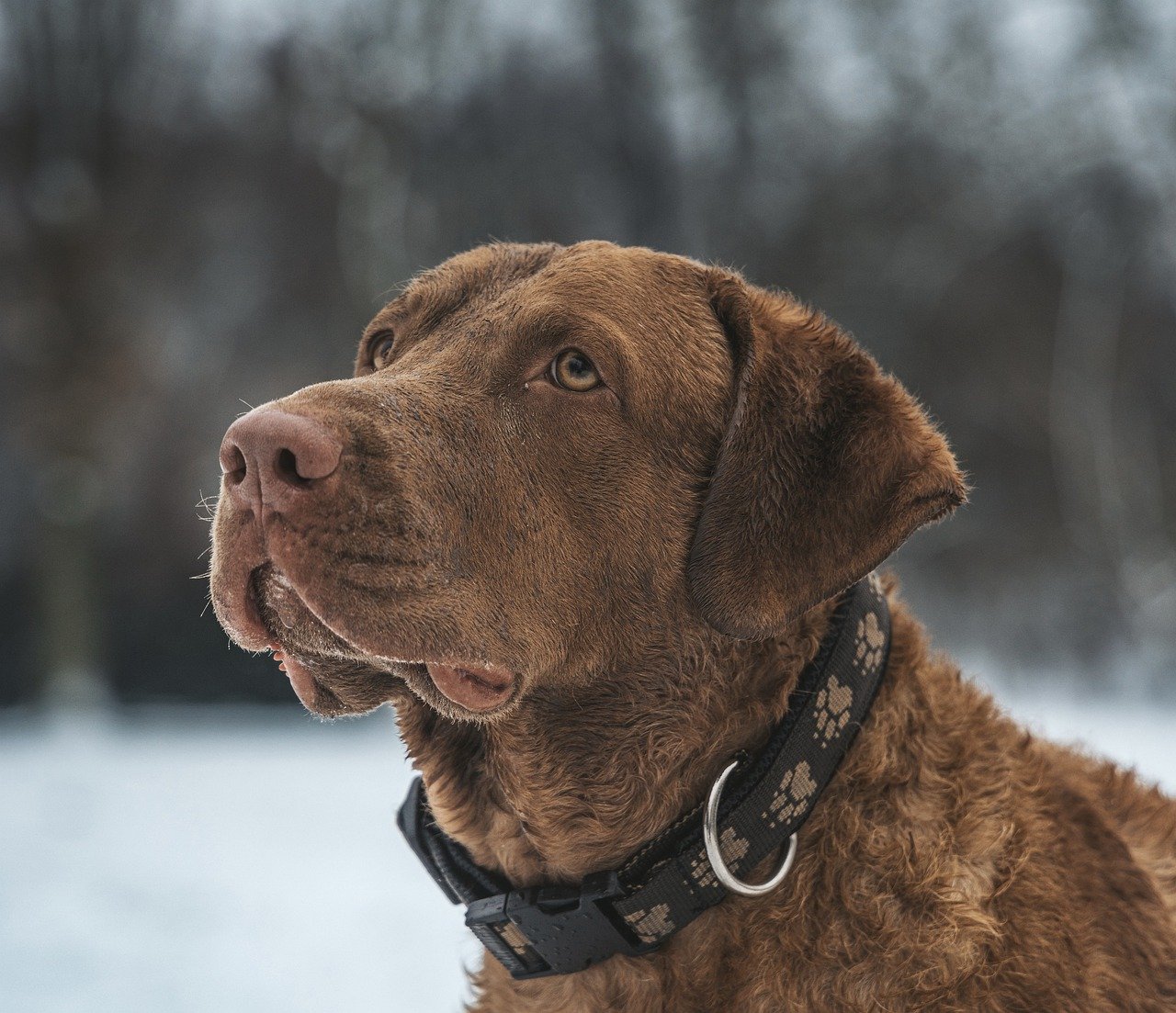
Bathing and Conditioning
Bathing your dog is not just a matter of keeping them clean; it's a vital part of grooming, especially for those furry friends with unique fur patterns. Just like how we feel refreshed after a nice shower, our dogs benefit immensely from a good bath. But hold on! It’s not just about splashing water and applying soap. You need to choose the right products that cater specifically to your dog's coat type and skin sensitivity. This ensures that their coat remains not only clean but also healthy and vibrant.
When selecting shampoos and conditioners, consider the specific needs of your dog's fur. For instance, if your dog has a curly coat, you might want a moisturizing shampoo that helps define the curls without making them frizzy. On the other hand, if your pup has a long, flowing coat, a detangling conditioner can work wonders in preventing mats and tangles. Here’s a quick guide to help you choose the right products:
| Fur Type | Recommended Shampoo | Recommended Conditioner |
|---|---|---|
| Curly | Moisturizing Shampoo | Leave-in Conditioner |
| Long | Detangling Shampoo | Silicone-based Conditioner |
| Short | Gentle Cleansing Shampoo | Lightweight Conditioner |
| Sensitive Skin | Hypoallergenic Shampoo | Oatmeal Conditioner |
After you’ve bathed your dog, it’s crucial to follow up with proper grooming techniques. This is where the magic happens! Drying your dog correctly is essential; using a towel to gently pat them down can prevent water from getting trapped in their fur, which can lead to skin irritations. If your dog is comfortable with it, consider using a blow dryer on a low setting, keeping it at a safe distance to avoid overheating their skin.
Once they’re dry, brushing becomes a key player in maintaining their unique fur pattern. Brushing not only removes any loose hairs but also distributes natural oils throughout their coat, enhancing its shine and texture. For those with intricate fur patterns, using the right brush is vital. For example, a slicker brush works wonders on long-haired breeds, while a bristle brush is perfect for short-haired dogs.
Lastly, don’t forget to apply finishing products that can protect and enhance your dog's coat. Products like coat sprays or oils can add that extra shine and make your dog feel pampered. Remember, a well-groomed dog is not just a joy to look at but also a healthier companion!
- How often should I bathe my dog? - Generally, every 4-6 weeks is recommended, but it can vary based on your dog's activity level and coat type.
- Can I use human shampoo on my dog? - It's best to use dog-specific shampoos as human products can irritate their skin.
- What if my dog hates baths? - Try to make bath time enjoyable by using treats and praise, or consider professional grooming services.
Choosing the Right Products
When it comes to grooming dogs with unique fur patterns, selecting the right products is absolutely crucial. Just like you wouldn’t use the same shampoo for curly hair as you would for straight hair, your dog’s coat deserves specialized care tailored to its specific needs. Think of your dog’s fur as a canvas; the right tools and products can make all the difference in the masterpiece that is their coat.
First things first, you need to consider your dog's specific fur type. For instance, a dog with a thick, double coat, like a Golden Retriever, may require a different shampoo than a dog with a finer, single coat, like a Chihuahua. The right products can help enhance the natural beauty of your dog’s fur while also addressing any underlying skin issues.
Here are some key factors to consider when choosing grooming products:
- Skin Sensitivity: Always opt for hypoallergenic shampoos if your dog has sensitive skin. Products with natural ingredients are often gentler and less likely to irritate.
- Coat Type: Dogs with curly or wiry fur might benefit from a moisturizing shampoo that helps prevent tangles, while those with sleek coats might need a clarifying shampoo to remove dirt and oil.
- Conditioners: A good conditioner can work wonders in keeping your dog’s coat soft and manageable. Look for products that are designed specifically for your dog's fur type.
- Additional Treatments: Depending on your dog's needs, you might want to consider extra treatments like detangling sprays or leave-in conditioners that can help manage unique fur patterns.
Moreover, it’s not just about the shampoo and conditioner; the tools you use also play a significant role. A high-quality brush suited for your dog’s fur type can help maintain their coat between baths, reducing the need for frequent washing and keeping their skin healthy. For example, a slicker brush is excellent for removing mats in long-haired breeds, while a bristle brush works well for short-haired dogs.
To make the selection process easier, you might find it helpful to create a grooming product checklist. This checklist can include the following:
| Product Type | Recommended For |
|---|---|
| Hypoallergenic Shampoo | Dogs with sensitive skin |
| Moisturizing Conditioner | Curly or wiry fur |
| Detangling Spray | Long-haired breeds |
| Deshedding Tool | Heavy shedders |
In summary, the right grooming products can transform your dog's grooming routine from a chore into a bonding experience. By understanding your dog’s unique fur pattern and needs, you can choose products that not only enhance their coat but also contribute to their overall health and happiness. Remember, a well-groomed dog is not just a joy to behold; it’s also a sign of a happy and healthy pet!
- How often should I bathe my dog? It depends on the breed and coat type. Generally, every 4-6 weeks is a good guideline, but always consult your vet for specific recommendations.
- Can I use human shampoo on my dog? It's not recommended. Human shampoos can disrupt the pH balance of a dog's skin, leading to irritation and other issues.
- What should I do if my dog has mats? Use a dematting tool or seek professional help if the mats are severe. Regular brushing can help prevent matting.
- How do I find the right groomer? Look for reviews, ask for recommendations, and ensure they have experience with your dog's specific breed.
Post-Bath Grooming Tips
After giving your furry friend a bath, it’s crucial to follow up with some effective grooming techniques to keep their unique fur pattern looking fabulous. Just like how we feel refreshed after a shower, dogs also need that extra care to ensure their coat shines and remains healthy. First off, make sure to gently towel-dry your dog to remove excess water. This step is vital because it helps prevent matting and keeps your dog's coat manageable. Think of it as giving them a cozy wrap after a swim!
Next, once your dog is mostly dry, it’s time to grab your brush. Using the right type of brush can make all the difference. For instance, a slicker brush works wonders for dogs with longer fur, while a bristle brush is perfect for shorter coats. Begin brushing gently from the roots to the tips, which helps to distribute natural oils throughout the coat, enhancing its shine. If you encounter any tangles, don’t just yank them out; instead, use your fingers to gently separate the fur, working from the ends back towards the roots. This technique minimizes discomfort for your pup and makes the process smoother.
After brushing, consider applying a leave-in conditioner or a finishing spray designed for dogs. These products can help detangle any remaining knots and provide an extra layer of moisture and protection to the coat. Just a light spritz can work wonders! Remember to avoid human products, as they can irritate your dog's skin. Instead, opt for those specifically formulated for canine use.
Finally, don’t forget to check your dog’s ears and paws during this grooming session. Post-bath is a great time to inspect these areas for any dirt or moisture that may have accumulated. Cleaning the ears gently with a vet-approved solution and trimming any excess fur around the paws can enhance your dog’s overall appearance and comfort. It’s like giving them a mini spa day!
1. How often should I bathe my dog?
Bathing frequency depends on your dog's breed, coat type, and lifestyle. Generally, every 4-6 weeks is a good rule of thumb, but dogs that love to roll in mud might need more frequent baths!
2. Can I use human shampoo on my dog?
No, it’s not advisable. Human shampoos can disrupt the natural pH balance of your dog's skin, leading to dryness and irritation. Always choose a shampoo formulated for dogs.
3. What should I do if my dog hates baths?
Start by making bath time a positive experience. Use treats and praise to create a fun atmosphere. You can also try using a handheld showerhead or a cup to pour water gently, which can be less intimidating.
4. How can I prevent matting in my dog's fur?
Regular brushing is key to preventing matting, especially for dogs with long or curly coats. Make it a routine, and consider using a detangling spray to help keep their fur smooth.
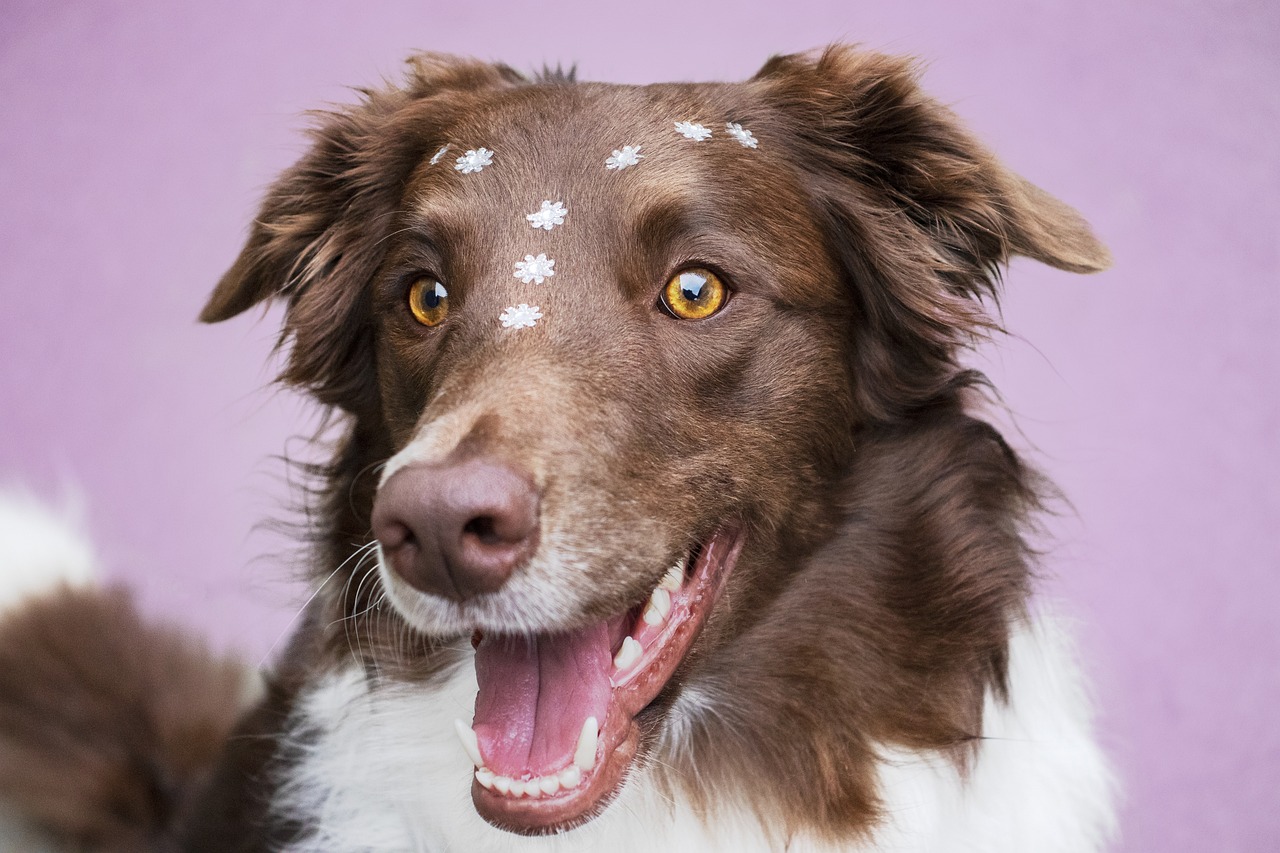
Professional Grooming Services
Sometimes, despite our best efforts, grooming our furry friends can be a daunting task. This is especially true for dogs with intricate fur patterns that require specialized care. In such cases, seeking out can be a game changer. Professional groomers possess the skills, knowledge, and tools necessary to handle even the most challenging grooming needs, ensuring your dog's coat looks its absolute best.
When you take your dog to a professional groomer, you can rest assured that they will receive the attention and care they deserve. These experts are trained to recognize the unique grooming requirements of various breeds and fur types. They can tackle issues like matting, tangles, and shedding with ease, using techniques that are often beyond the average pet owner's capabilities.
But how do you know when it's time to seek out professional help? Here are some indicators:
- Severe Matting: If your dog's fur is heavily matted and you find it difficult to brush out, it may be time to consult a professional.
- Skin Issues: If you notice redness, irritation, or unusual odors on your dog's skin, a groomer can help address these concerns safely.
- Time Constraints: If you simply don't have the time or energy to groom your dog properly, a professional can take that burden off your shoulders.
Finding a qualified groomer is crucial. You want someone who not only understands unique fur patterns but also has a good rapport with dogs. Start by asking for recommendations from friends or family, and don't hesitate to read online reviews. A good groomer will have experience with your dog's specific breed and will be able to tailor their services to meet your dog's individual needs.
Moreover, many professional grooming services offer additional treatments that can enhance your dog's overall well-being. For example, some groomers provide spa-like services, including:
| Treatment | Description |
|---|---|
| De-shedding Treatments | Helps to reduce shedding and keep your home fur-free. |
| Moisturizing Baths | Hydrates the skin and fur, especially beneficial for dogs with dry or sensitive skin. |
| Nail Trimming | Essential for your dog's comfort and health, preventing painful overgrowth. |
Ultimately, while grooming your dog at home can foster a wonderful bond between you and your pet, there are times when professional grooming services are the best option. They not only save you time but also ensure that your dog's coat remains in top condition. So, if you find yourself overwhelmed with your dog's grooming needs, don't hesitate to reach out for professional help.
Q: How often should I take my dog to a professional groomer?
A: It depends on the breed and fur type, but generally, every 4-8 weeks is a good guideline for most dogs.
Q: What should I look for in a professional groomer?
A: Look for experience with your dog's breed, good reviews, and a clean, welcoming environment.
Q: Are professional grooming services expensive?
A: Prices can vary widely based on location, the services provided, and your dog's size. It's best to call around and compare.
Q: Can I stay with my dog during the grooming session?
A: Many groomers allow you to stay, but some may recommend dropping off your dog to reduce anxiety.
When to Consider Professional Help
Grooming your dog can be a rewarding experience, but there are times when it’s wise to call in the professionals. Just like we might seek a stylist for a complicated haircut, your furry friend may need expert assistance, especially if they have unique fur patterns that require specialized care. So, how do you know when it’s time to hand over the grooming tools? Here are some key indicators to keep in mind.
First off, if your dog’s coat is severely matted, it can be painful and stressful for both you and your pet to try and tackle it at home. Mats can pull on the skin, causing discomfort, and attempting to remove them without the right tools and techniques can lead to injury. In such cases, a professional groomer has the experience and equipment to safely and effectively remove mats without causing harm.
Another situation to consider is if your dog has a particularly thick or long coat that requires extensive grooming. Breeds like the Samoyed or Newfoundland have fur that can be overwhelming for novice groomers. If you find yourself spending hours trying to manage your dog’s coat with little success, it might be time to consult a professional who knows exactly how to handle those unique fur types.
Additionally, if you notice any skin issues such as redness, irritation, or unusual odors, it's best to seek professional help. Groomers are trained to spot potential skin problems and can recommend treatments or refer you to a veterinarian if necessary. Ignoring these signs can lead to more significant health issues down the road.
Lastly, consider your own comfort and skill level. Grooming can be a fun bonding experience, but if you feel overwhelmed or unsure about how to proceed, it’s perfectly okay to seek help. A qualified groomer can not only do the job effectively but can also provide you with tips and tricks to make future grooming sessions easier.
Ultimately, knowing when to seek professional help can save you time, reduce stress for both you and your dog, and ensure that your furry friend looks and feels their best. Remember, a well-groomed dog is a happy dog!
- How often should I take my dog to a groomer? This depends on your dog's breed and coat type, but generally, every 4-8 weeks is a good rule of thumb.
- Can I groom my dog at home? Absolutely! With the right tools and techniques, many dog owners successfully groom their pets at home.
- What should I look for in a professional groomer? Look for experience with your dog’s breed, positive reviews, and a clean, safe grooming environment.
- How can I prepare my dog for a grooming appointment? Make sure your dog is well-exercised beforehand and bring along any favorite toys or treats to help them feel comfortable.
Finding a Qualified Groomer
When it comes to grooming your dog, especially one with a unique fur pattern, finding a qualified groomer is absolutely essential. Not all groomers are created equal, and the right one can make a world of difference in your dog's grooming experience. So, how do you find that perfect match? Start by asking around! Recommendations from friends, family, or even your veterinarian can lead you to talented groomers who have a solid reputation in your community.
Once you have a few names, take the time to do a little research. Check their online reviews and testimonials. Look for comments that specifically mention experience with your dog's breed or fur type. A groomer who has successfully worked with dogs similar to yours will likely understand the specific needs and challenges associated with your dog's unique coat.
Don’t be afraid to visit the grooming salon beforehand. A quick visit can give you valuable insight into the cleanliness of the facility, the demeanor of the staff, and the overall atmosphere. You want a place that feels welcoming and safe for your furry friend. During your visit, consider asking the groomer some questions, such as:
- What grooming techniques do you use for dogs with unique fur patterns?
- How do you handle dogs that may be anxious or have had negative grooming experiences in the past?
- Can you provide examples of how you’ve managed specific grooming challenges?
Another crucial factor to consider is the grooming tools and products they use. A qualified groomer should be using high-quality, dog-safe products tailored to different coat types. Don't hesitate to ask about the brands they use and whether they can accommodate any specific needs your dog may have, such as allergies or skin sensitivities.
Lastly, trust your instincts. If something feels off during your initial interactions or if the groomer doesn't seem to take the time to address your concerns, it might be best to keep looking. Your dog's comfort and well-being should always come first. A great groomer will not only enhance your dog's appearance but also contribute positively to their overall grooming experience.
1. How often should I take my dog to a groomer?
The frequency of grooming depends on your dog's breed and fur type. Generally, dogs with unique fur patterns may require grooming every 4 to 6 weeks to keep their coats in top shape.
2. What should I do if my dog is anxious about grooming?
If your dog is anxious, it's important to communicate this to your groomer. They can use calming techniques and may even suggest a trial grooming session to help your dog acclimate to the process.
3. Can I groom my dog at home instead of using a professional?
While some basic grooming can be done at home, professional groomers have the experience and tools to handle intricate fur patterns effectively. If you're unsure, consider starting with a professional and then maintaining the coat at home.
4. What should I look for in a grooming facility?
Look for a clean, organized space with friendly staff. The groomers should be knowledgeable and willing to answer your questions. A good facility will also have safety measures in place to ensure your pet's well-being.
Frequently Asked Questions
- What are unique fur patterns in dogs?
Unique fur patterns refer to the distinct coat types and color combinations found in various dog breeds. These patterns can include spots, stripes, or specific textures that require tailored grooming techniques to maintain their health and appearance.
- Why is regular grooming important for dogs with unique fur patterns?
Regular grooming is crucial as it helps prevent matting, reduces shedding, and keeps the coat healthy. It also allows you to check for skin issues, ensuring your furry friend stays comfortable and looking great!
- How often should I groom my dog?
The frequency of grooming depends on your dog's fur type. For example, dogs with long or curly coats may need grooming every few weeks, while short-haired breeds might only require grooming every month. Always keep an eye on your dog's coat condition!
- What signs indicate my dog needs grooming?
Look for signs like excessive shedding, matting, or changes in coat texture. If your dog seems uncomfortable or has tangles, it's definitely time for a grooming session!
- What tools do I need for grooming my dog?
Essential grooming tools include brushes, combs, clippers, and shampoos specifically designed for your dog's coat type. Having the right tools is key to achieving a well-groomed look!
- How do I choose the right shampoo and conditioner for my dog?
Select products that cater to your dog's specific needs, such as skin sensitivity and coat type. Always opt for high-quality, pet-friendly products to keep their coat healthy and shiny!
- When should I consider professional grooming services?
Consider professional help if your dog has a complex coat type, severe matting, or if you're unsure about handling their grooming needs. Professionals have the experience and tools to make your dog look fabulous!
- How can I find a qualified groomer for my dog?
Look for recommendations from friends or your vet, read online reviews, and ensure the groomer has experience with your dog's specific breed. A good groomer will understand the nuances of unique fur patterns!



